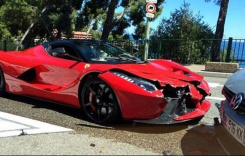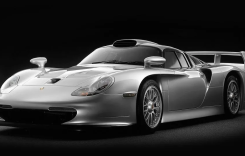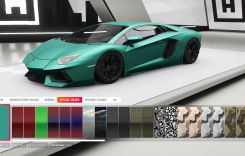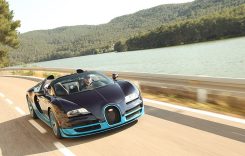
Honda gave its quarter-liter MXer a redesign in 2014, but the CRF250R fell just a tad short in our test rider’s eyes. While the Honda is one of the best handlers in the 250 MX class, soft suspension and mellow power left everyone looking for more. For 2015 Honda has aimed to address those issues with a new Triple Air Chamber Separate Function Fork and more bottom and midrange power from its 250 Single. MotoUSA headed So-Cal’s Competitive Edge MX track to see if Honda has improved on the 2014 model.
With so many changes in the 2014 revamp, the list of updates on the 2015 CRF250R is not long but it is significant. For us the most notable is the 49mm Showa Triple Air Chamber Separate Function Fork (TAC SFF-Air). So far we’ve not been totally convinced that the air fork revolution is really all that it is cracked up to be. But like it or not, pneumatic forks seem to be the direction the technology is going in the MX ranks. Eventually we will all learn to live with and tune air forks; and maybe we’ll even look back and laugh at the time we thought coil springs were the only way.

The Honda SFF fork splits the spring and damping duties between the two legs. On the left leg three chambers contain the inner, outer and balance pressures, while the right leg houses the damping assembly. Pressures are adjustable in the inner and balance chamber with outer chamber at ambient pressure. The inner chamber’s 174 psi acts as the main spring rate and can be adjusted over a range of around 20 psi. This higher pressure allows for more fine tuning as well as less change as the temps rise near the end of a moto. The balance chamber at the bottom of the fork leg affects the ride height (sag) and the initial action of the fork movement. The higher the pressure the more the balance chamber pulls the fork down while softening the initial action. The outer chamber is non-adjustable but there is a plug where a Schroeder valve can be installed for even further fine tuning, though Showa’s
(Above) The inner chamber’s 174 psi acts as the main spring rate and can be adjusted over a range of around 20 psi. (Below) On the right leg both the compression and rebound damping is adjustable through 16 clicks.
reps warned about an increased risk of a blown seal. Compression and rebound damping is adjustable on the right leg through 16 clicks. One of the advantages of an air-spring fork is weight reduction, and the CRF’s new sticks shed 2.8 pounds off the front end.
On the track the new forks performed well after a few trips into the pits for adjustments to air pressure and clickers. Overall we think the Honda’s SFF-Air forks are the best yet, though we still experienced a rise in pressure towards the end of a 20-minute session in the 100-degree-plus weather. We have just begun to scratch the surface on set-up and are beginning to see the light when it comes to air forks. However, a bit of advice – get a notebook and keep copious notes on your settings. With so much to adjust and tune, riders can quickly lose their way.
At the rear the Pro-link Showa equipped rear shock matches the front end, although our pro-level tester thought it was slightly soft, even on the smoother layout of Comp Edge.
Handling is still stable and confidence inspiring. Even with the softer suspension the terms kicking and swapping are not in the CRF250’s vocabulary. The rear-end tracks straight and true and slamming the CRF into the corners reveals a very neutral character. It goes where you want it to without a fuss, and riders won’t find themselves fighting to get the CRF though turns.
The CRF250R got a new motor configuration just last year, but our team still found it to be one of the mellowest in the class. Honda made just a few changes to increase the muscle from the Unicam mill. Mechanically, the exhaust diameter has been enlarged for more low-end grunt. The biggest addition is the easy-to-use and very slick engine mode select button. Three preset maps are available at the press of a button mounted on the right handlebar. Mapping selection is indicated through blinks from the blue LED in the button itself. One blink for the standard map, two for a smooth map and three for an aggressive map. Users can also make changes to the smooth and aggressive maps with an HRC tuning tool. It’s just so much more polished and easy to use than changing couplers back in the pits. Just pull off the track and change the map while idling. Simple and effective.

Even in the standard mode the mid-range of the CRF250F has a noticeable improvement, but we still feel the power output overall is still not competitive with the HP kings of the class. We spent just a few minutes with the smooth map that cuts fuel and ignition timing for less punch in muddy or slick conditions; so we will hold our judgment on this mode until a rainy day. For most of the day during our first-ride evaluation, it was three blue flashes for our crew as we found the increased throttle response and snappiness woke up the CRF250R’s mellow character. Top end power tapered off quickly, requiring earlier shifts than we’d prefer, but overall it is a marked improvement over the 2014 model.
Last year in our 2014 250 Motocross Shootout we felt the front brake could use some work, and Honda listened. A larger 260mm wave rotor replaces the 240mm unit from last year and the stopping power has improved.
The 2015 Honda CRF250R has absolutely improved this year, and it does so without a change in price at $7999. The increased power output combined with selectable engine modes and an air fork that actually works well, make it the best 250cc Honda four-stroke yet. While it still may not have the most powerful engine, the excellent chassis allows you to put all of what it does have to use. And for that, we still say the CRF250R is the easiest to ride, which will give most riders more enjoyment per gallon of gasoline.









